Another item of our most reliable pieces of camping and touring equipment is our dutch oven. In fact we have two of them. Dutch ovens are big cast iron pots with lids.They can be placed in a campfire or over an oven or flame and can be uses to roast , fry and bake various foods. These versatile pots need a little tender loving care from time to time however.
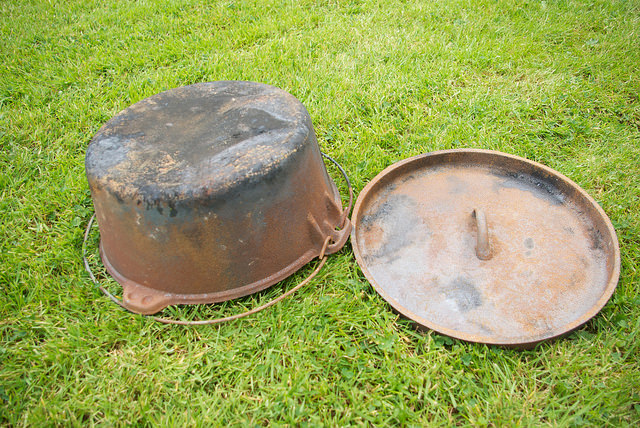
When new , or following a period of use and storage without proper precautions, the ovens can quickly become covered in rust and corrosion.The solution to this is to ‘season’ the oven ensuring that it will not rust or corrode. The seasoning process also creates a non-stick cooking surface which makes cooking and cleaning up far easier.
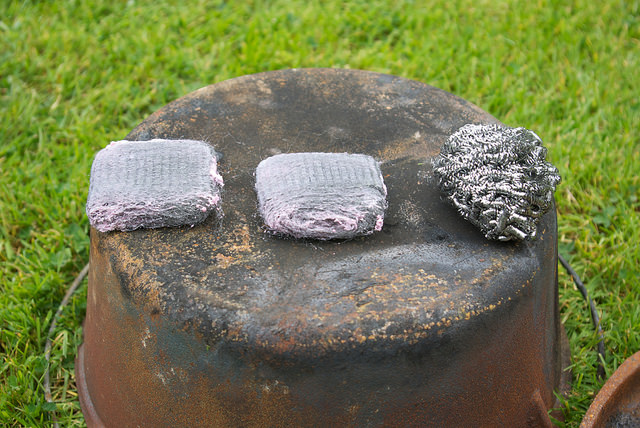
This process can take anything from 1-3 or more hours depending on how thorough you want to be and also on the existing state of the oven you are seasoning.If this is the first time you have seasoned the oven, you may need to remove a protective waxy coating applied at the factory, which is used to prevent rust during initial shipment and storage. If you have an old, neglected oven, which is covered in rust and perhaps burnt in food, you will also need to clean this.
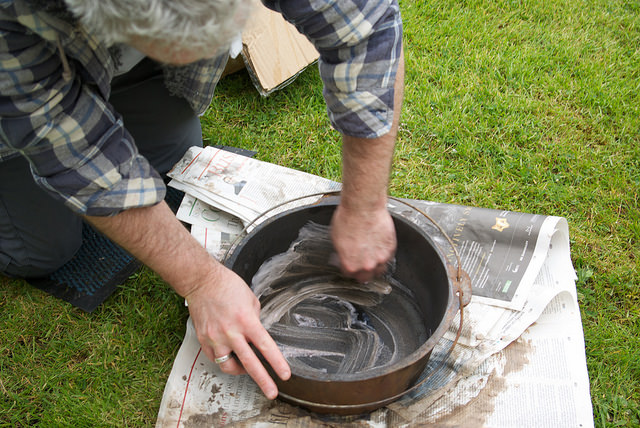
To fix up a rusty dutch oven you need to scrub any rust and burnt in food, you can use steel wool or a metal scouring pad to do this. You really need to get rid of all of the food and rust, scrape away, right down to the metal.
Once you have cleaned off all of the rust, you need to act quickly as waiting even a few hours can allow enough time for humidity in the air to start to cause rust to form again.
The next step is to put the dutch oven into a normal household oven. Before you heat the oven it would probably be wise to spread some metal foil across the base of the oven to catch any fat or oil which drops from your dutch oven during the seasoning process.
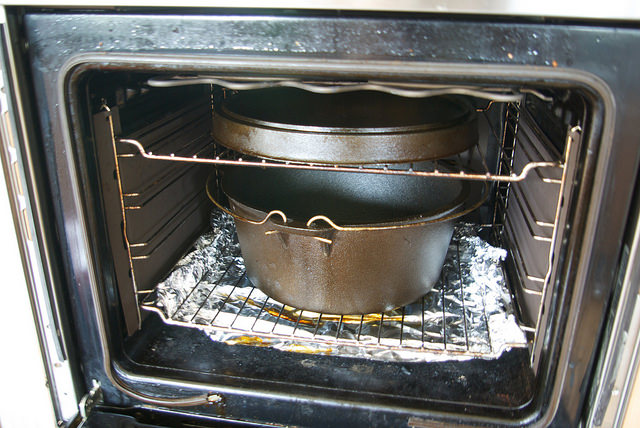
Heat the oven to 210C;Wash your dutch oven with warm soapy water. using a scouring pad or steel wool. This should be the last time you ever use soap to clean the oven, unless you are re-seasoning it in the future.
Dry the dutch oven with a cloth and place it in the oven for 5 minutes to further dry and to heat up a little. After five minutes, carefully, using oven gloves or a towel, remove the dutch oven and bring it outside and place it on some old newspapers.
Rub vegetable shortening all over the inside and outside of the oven and its lid. Do not use any flavoured shortenings, we used Frtyex, which is widely available.
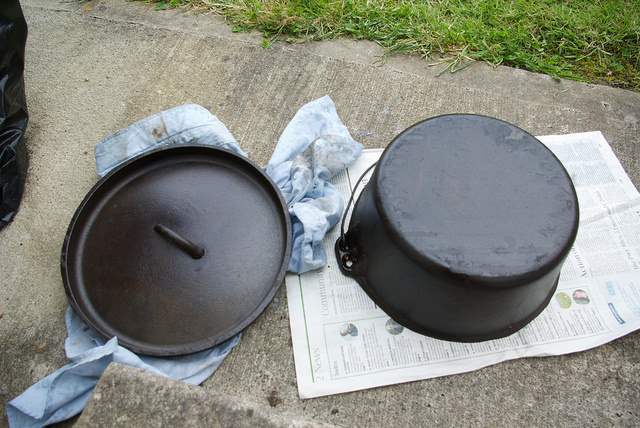
Using a cotton rag or a paper towel rub the oil into all of the grooves, gullies , pits and pockmarks present anywhere on the oven. When you have done this wipe it again (and again?) to remove excess oil, keep wiping until it looks like there is no oil left.
Place the oven and its lid upside down in the oven and bake it for 60 minutes. If your oven leaks smoke, you will probably want to open some windows and perhaps disconnect your smoke alarm temporarily.
After 60 minutes, turn off the heat and let everything cool for 30 minutes. Using an oven glove or a towel remove the dutch oven from the house oven. Allow it to cool until you can safely pick it up to examine it.
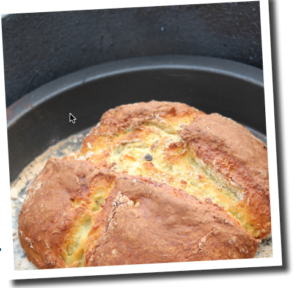
Bread baked using a Dutch oven
You may obtain good results after one cycle or you may need to repeat the process a couple of times. To repeat, spread more oil on the oven, wipe it in, then off with the cloths and then place back into the pre heated oven for another 60 minutes.
When it has been well seasoned it should look shiny/glossy and be a dark brown or black colour. It should not be sticky to the touch. If it is sticky, heat it for longer, until the sticky residue is burnt off.
From now on as you use the oven, grease and oil from the food will continue to add a layer of protective seasoning to the oven. In future, however, don’t use soap to clean it, instead use hot water and a scrubbing brush to do so, and always ensure you thoroughly dry the oven after cleaning, this can be done by placing it over the heat/fire and leaving the lid on but leaving a gap for moisture to escape.
Finish by towelling dry with a cotton or paper towel. Ideally when the oven is dry and not hot to the touch, you should use a paper towel to coat it in a ‘very’ light coating of vegetable oil, to give it a protective layer while it is being stored for future use. The more you cook with the oven, the more ‘seasoned’ it will become and therefore the more resistant to rust and moisture.

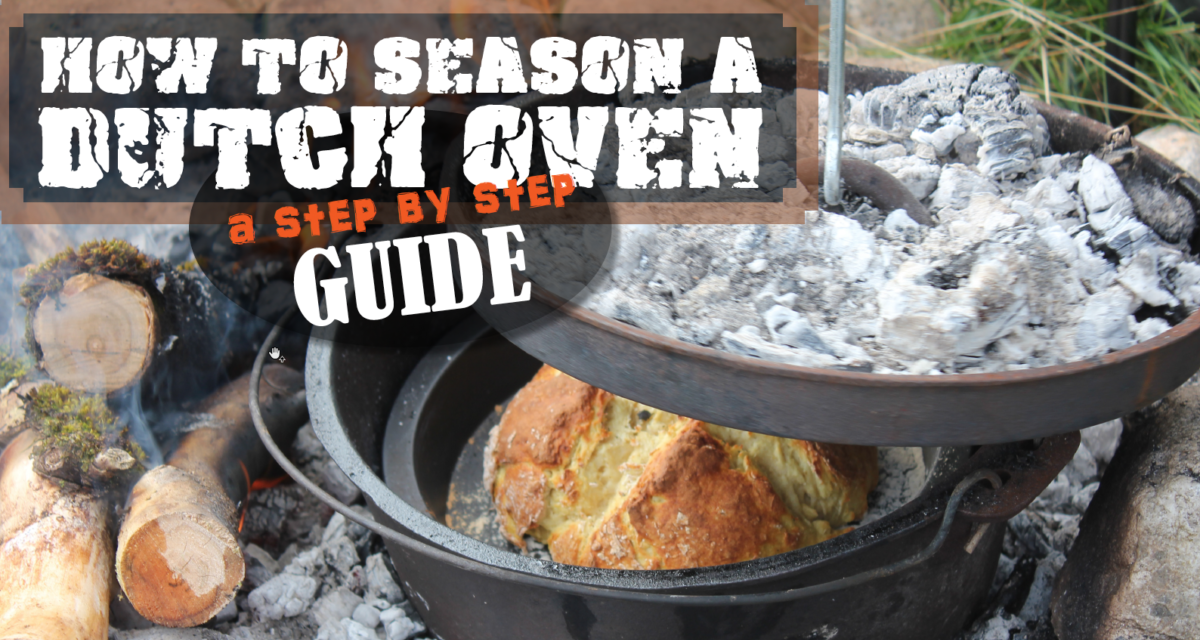

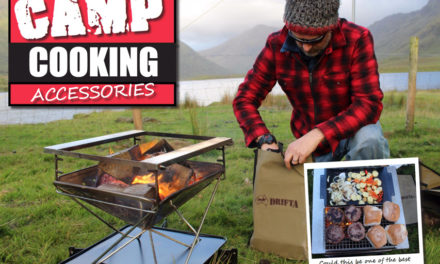




Recent Comments